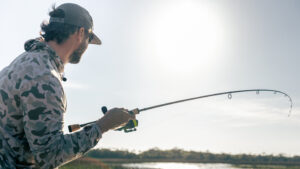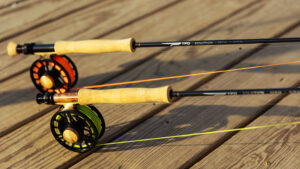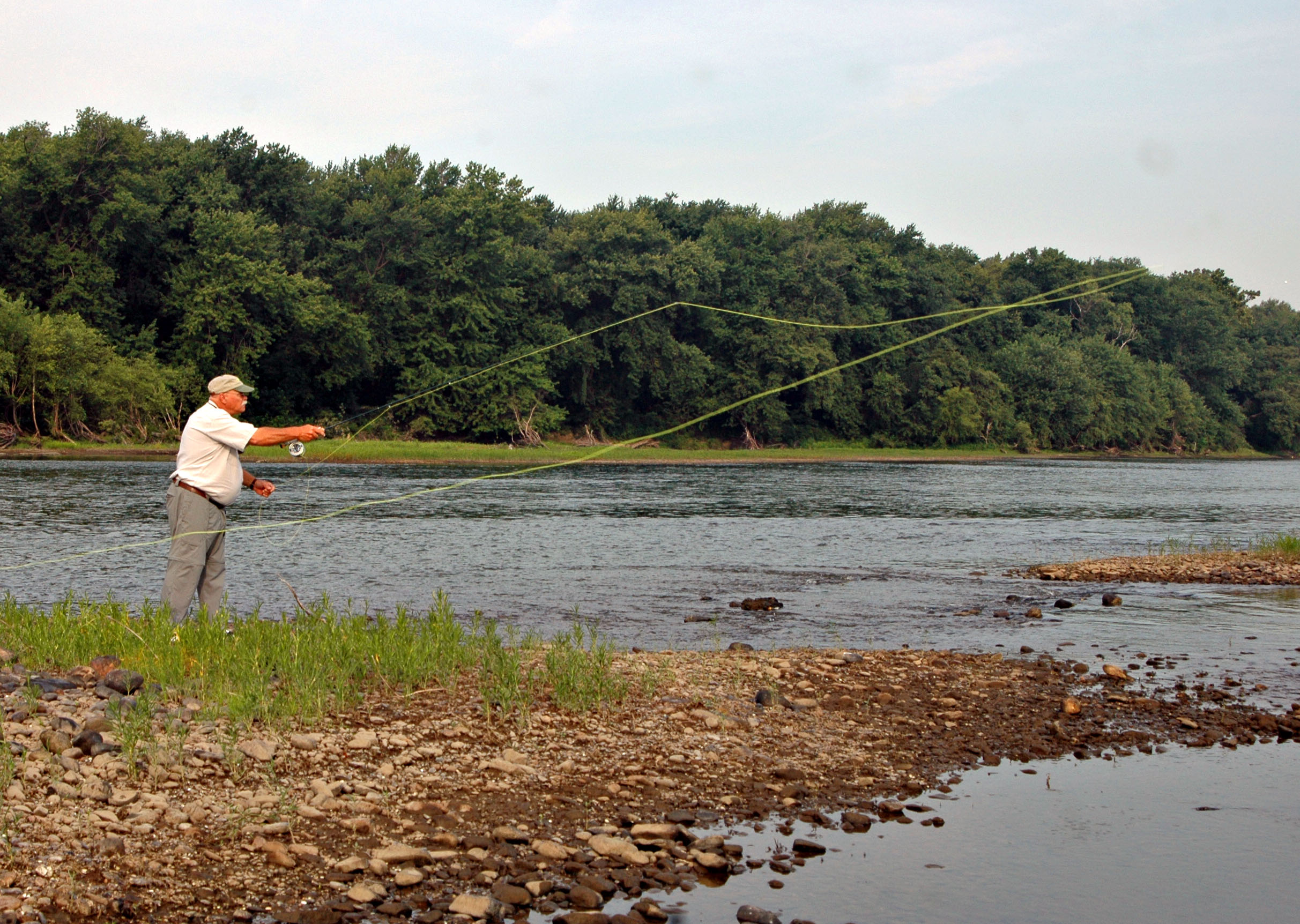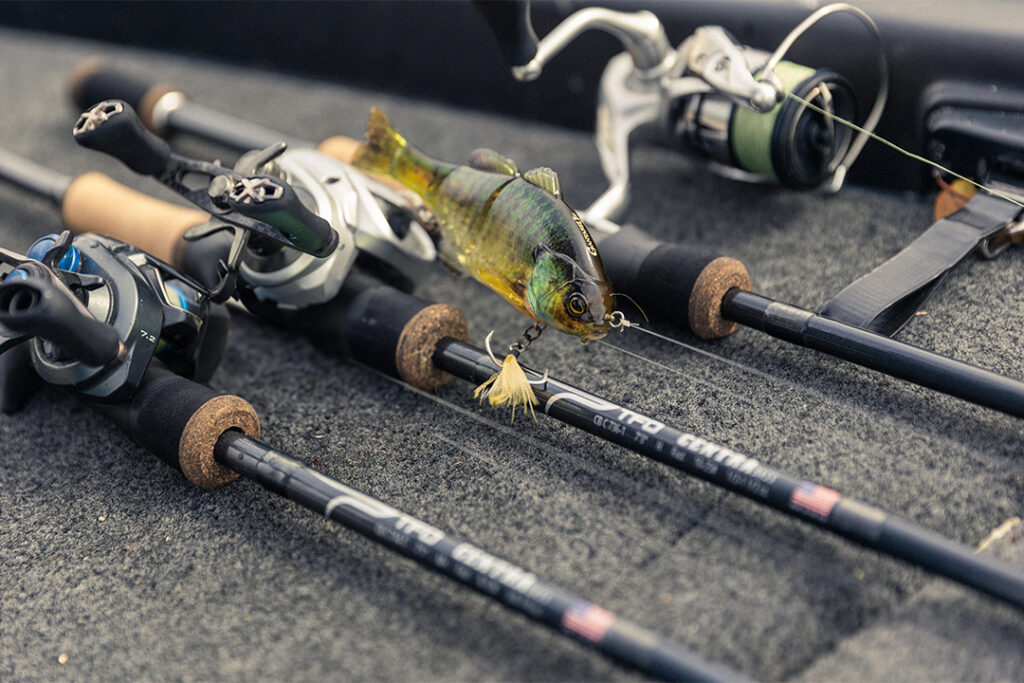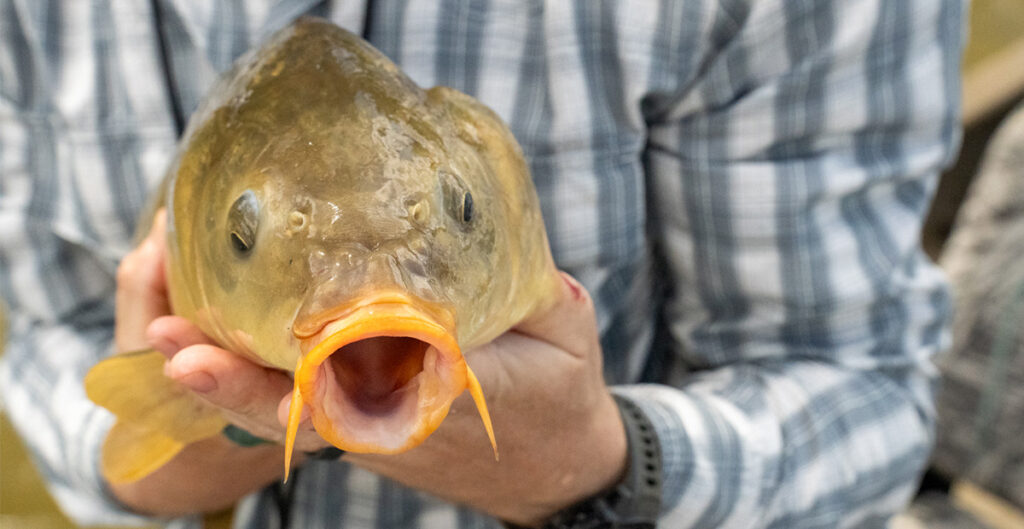Editor’s Note: This is a story by TFO Advisor Bob Clouser. It was first published in the 2014-15 edition of the Loop Newsletter. To see Bob’s story in its original form as well as gather a wealth of other fly-casting info, you can access the Journal of Fly Casting Professionals at the Fly Fishers International website by clicking on the following link: https://www.flyfishersinternational.org/Casting/TheLoopNewsletter/tabid/208/Default.aspx
You don’t need to throw a wide loop when fishing weighted flies and lines. In fact, you’re more efficient if you don’t. Lefty Kreh and I developed a casting stroke that, when properly executed, delivers weighted flies and lines with a tighter loop and less work. I call it the Inverted Loop Cast.
Begin the cast after you’ve already retrieved the fly from deeper water, so the line is near the surface of the water.
Step 1
Without breaking your wrist, begin your back cast by rotating your hips and shoulders in the direction of the back cast with the rod traveling to reach a 45-degree angle by the end of the back cast. The line travels below the rod tip to create an inverted loop. After your hand passes your left shoulder, speed up and stop the rod to send the weighted line and fly rearward. The inverted loop will unroll and send the weighted fly in an upward trajectory at the end of the back cast (instead of the downward direction with the standard cast).
Step 2
Without pausing, elevate the angle of the rod from 45 degrees to approximately 60-75 degrees (closer to upright/vertical) without lifting your hand or elbow. This keeps constant tension on the line and avoids shocking the line when you begin the forward cast.
Step 3
As the casting hand changes the rod angle to 90 degrees, simultaneously begin rotating your body for the forward cast. Once the casting hand and shoulder passes the plane of the opposing shoulder, accelerate and stop the tip of the rod in the direction of the target to complete the cast.
Remember to apply constant tension on the rod through the entire cast. It is almost like pulling the weighted line and fly through the entire back and forward casting motion. Don’t pause between the back and forward cast; merely change the plane of the rod from 45 degrees to 90 degrees as the body begins forward rotation. For better accuracy, pull the line directly away from the target on the back cast before speeding up and stopping the rod.
Tips for Casting Weighted Lines and Flies
- Learning how to fish with weighted flies and lines will improve your catch rate for sure.
- Keep constant tension on the fly rod through the entire casting stroke.
- Use your body. Bring your casting-hand shoulder back with the motion of the back cast. When making the front cast, bring the casting shoulder forward until it passes the non-casting shoulder. Then apply the same forward speed-up-and-stop by pushing the palm of the hand forward. This kind of like throwing a dart, baseball, or hitting a golf ball. Use no-up-and-down wrist movement.
Very important, never use the wrist and arm where it moves in an up and downward motion.

Step 1

Step 2

Step 3
